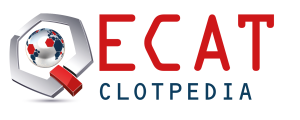By sending a questionnaire to the participants in our von Willebrand Factor module we evaluated how our partipants perform the laboratory diagnosis of von Willebrand Disease. The outcome of this questonnaire was compared with results of the ECAt external quality assessemnt programme for von Willebrand Factor. The results of this study has been described in the following publication:

Abstract
Background: Reduced or dysfunctional von Willebrand factor (VWF) may lead to von Willebrand disease (VWD), which is a common inherited bleeding disorder. VWD is classified into three major types: type 1 is a partial quantitative deficiency ofVWF, type 3 is a complete quantitative deficiency of VWF, and type 2 consists of qualitative abnormalities of VWF. To arrive at a correct VWD diagnosis, multiple tests and a correct interpretation of these tests are needed.
Aim: The aim of the present study was to gain insight into the approach of laboratories toward VWD diagnosis.
Methods: Data from four samples of the external quality assessment (EQA) VWF surveys of the ECAT (External Quality Control for Assays and Tests) were evaluated. Furthermore, results were analyzed of a questionnaire that was sent to hemostasis laboratories about VWD diagnostic approaches.
Results: For most EQA samples, the majority of participants indicated the correct classification. However, 6 to 60% indicated another classification. For all samples, significant differences in VWF results were observed between the correct and incorrect classifications. The questionnaire demonstrated that the testing approach varied between the laboratories, especially for parameters that were essential for discrimination between VWD type 1 and healthy individuals, as well as the cutoff values used to discriminate VWD types 1 and 2.
Conclusions: Diagnosis of VWD is heterogeneous in diagnostic approach, guidelines, and cutoff values within large ranges of VWF results between laboratories. Harmonization of approaches and increased accuracy of VWF measurements may help to establish a correct diagnosis.
Semin Thromb Hemost 2022;48:739–749.
This is publication can be approached via the following link: https://www.thieme-connect.de/products/ejournals/abstract/10.1055/s-0042-1754354
